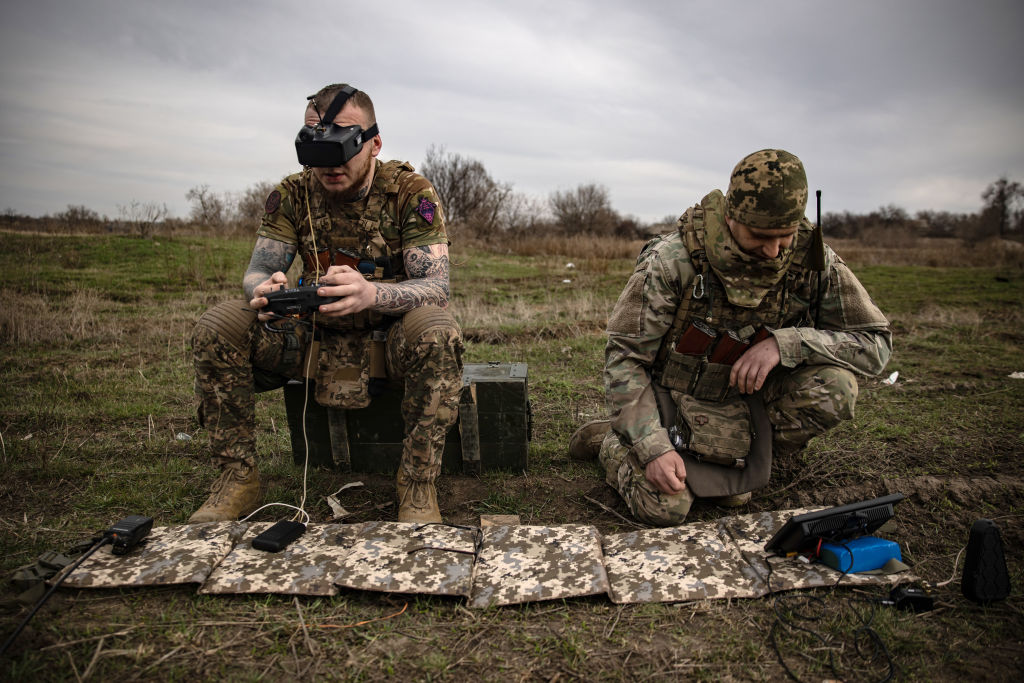AI Emerges as a Critical Asset in Ukraine’s War Effort, Defense Technologist Says

Ukraine’s full-scale war has turned the country into one of the world’s most intensive testing grounds for military artificial intelligence.
In an exclusive interview with The Gaze, Ruslan Prylypko, head of C2IS (Command and Control Information Systems) at the Ukrainian NGO Aerorozvidka, said the war has radically transformed both the pace and scale of AI integration across Ukraine’s defense ecosystem.
According to Prylypko, the frontline generates vast quantities of video, imagery, telemetry, and sensor data – far beyond what human analysts could ever process.
“The information flows are so large that a person simply cannot view everything in time,” he explained. “AI allows us to ‘compress’ time and act before data loses its value.”
Prylypko emphasized that several factors have made real-time military AI possible: accessible computing power, mature algorithms, and the natural transfer of civilian tech into defense.
Cloud platforms, commercial machine-learning tools, and off-the-shelf GPUs, once reserved for major corporations and governments, are now accessible to Ukrainian engineers. This convergence, he noted, “made the introduction of artificial intelligence on the battlefield almost inevitable.”
Today, Ukrainian forces rely on AI-supported systems for target recognition in video and drone feed, navigation without GPS, including vision-based pathfinding, telemetry analysis and automated mapping, battlefield data analytics, decision-support, rapid intelligence processing, and automation of routine tasks, freeing personnel for critical operations
Drone Swarms and Autonomy
One of the most promising, and challenging, areas of development is autonomous drone swarming. Ukraine is experimenting with systems that would allow a single operator to control groups of drones simultaneously, coordinating routes and target priorities without constant manual input.
“Coordinating an entire fleet – whether in the air or on the ground – requires artificial intelligence. There are few fully effective solutions today, but research is moving fast,” Prylypko said.
Ukraine is also testing autonomy-enhancing tools such as neural networks capable of mapping terrain and identifying safe routes even under heavy jamming, when GPS and radio signals are unreliable.
Advantages: Speed, Safety, and Precision
According to Prylypko, AI is already reshaping tactical planning and operational tempo. It helps drastically reduce the time needed for intelligence processing, minimize risks for soldiers by enabling semi-autonomous missions, predict enemy movement, generate instant reports, and feed them directly into command systems.
“Automation, robotization, autonomy – all of this reduces human losses and increases military effectiveness,” he noted.
Rapid adoption of AI also brings significant risks
The rush to integrate AI does not come without dangers. The first and most fundamental risk lies in the training data itself. Incorrect or incomplete datasets can lead to flawed recognition – a drone might misidentify an object, or fail to detect a target entirely.
Over-reliance on AI poses another threat. When algorithms perform well, operators may trust them unquestioningly, allowing critical mistakes to slip through without human oversight.
There are technical vulnerabilities as well. If AI models are not properly protected, they can be intercepted, analyzed, copied, or repurposed by Russian forces. And with every layer of complexity comes new uncertainty: what happens if an autonomous system makes an error at the worst possible moment?
Despite the risks, Prylypko believes AI has already become integral to Ukraine’s defense. Modern military operations depend on rapid navigation, efficient target acquisition, and the constant flow of analyzed data to command centers.
Artificial intelligence underpins all of this, enabling the army to make faster, more precise decisions. “This is a war of technologies. AI is not replacing people – it is a tool. But it is a tool without which many processes would simply be impossible,” he said.
As The Gaze reported earlier, Ukrainian-American startup NeoLens has unveiled the world's first offline AI assistant for diagnosing and repairing armored vehicles that is already being used on the front lines by Ukrainian mechanics.
Read more on The Gaze: How AI Is Transforming Modern Warfare: Lessons from Ukraine’s Battlefield